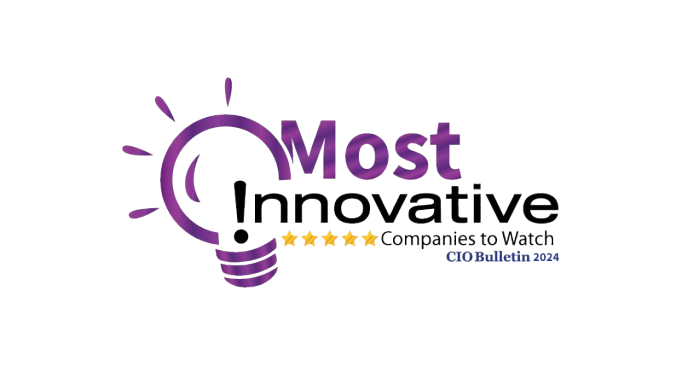Mastering HubSpot Onboarding: Your Ultimate Guide
June 5, 2023
Welcome to our comprehensive guide to mastering HubSpot onboarding. At Proven ROI, we understand the importance of effectively implementing and optimizing HubSpot, and we're here to provide you with the knowledge and strategies you need to outrank your competitors. In this guide, we'll delve into the intricacies of HubSpot onboarding, covering everything from its benefits and key features to the step-by-step process of getting started. By the end, you'll be equipped with the expertise to successfully leverage HubSpot and supercharge your online presence. Let's dive in!
Understanding HubSpot Onboarding
HubSpot onboarding is the process of integrating and setting up HubSpot's suite of marketing, sales, and customer service tools for your business. This platform offers a plethora of features designed to streamline and optimize your inbound marketing efforts, customer relationship management, and sales pipeline management. With HubSpot, you gain access to a centralized system that enables you to attract, engage, and delight your target audience while nurturing leads and driving conversions.Benefits of HubSpot Onboarding
Implementing HubSpot through a thorough onboarding process brings a multitude of benefits to your business. Here are a few key advantages that set HubSpot apart:All-in-One Solution: HubSpot provides a comprehensive suite of tools, including content management, email marketing, social media management, analytics, and more, all under one roof. This integration eliminates the need for multiple disjointed systems, streamlining your workflows and increasing efficiency.
Enhanced Lead Nurturing: HubSpot's marketing automation capabilities allow you to create personalized workflows that nurture leads at every stage of the buyer's journey. By delivering targeted content and automating follow-ups, you can build stronger relationships with prospects, leading to higher conversion rates.
Improved Sales Alignment: HubSpot facilitates seamless communication between marketing and sales teams, ensuring a unified approach to customer acquisition and retention. By sharing valuable data and insights, you can optimize your sales processes and close deals more effectively.
Data-Driven Decision Making: With HubSpot's robust analytics and reporting features, you gain valuable insights into the performance of your marketing and sales efforts. This data empowers you to make informed decisions, refine your strategies, and maximize your return on investment.
Key Features of HubSpot
To understand how to effectively leverage HubSpot, let's explore some of its key features:1. Content Management System (CMS) HubSpot's CMS allows you to create and manage your website's content with ease. With a user-friendly interface and a range of customizable templates, you can build professional, mobile-responsive web pages that align with your brand and engage your audience.
2. Email Marketing HubSpot's email marketing tools enable you to create personalized email campaigns, segment your audience, and track email performance. By leveraging automation and A/B testing, you can optimize your email communication and drive higher engagement and conversions.
3. Social Media Management Streamline your social media efforts with HubSpot's social media management features. Schedule and publish posts, monitor conversations, and analyze social media performance all from one centralized dashboard.
4. Marketing Automation HubSpot's marketing automation capabilities allow you to automate repetitive tasks, such as lead nurturing, email follow-ups, and social media posting. By setting up workflows, you can deliver the right content to the right people at the right time, fostering stronger connections with your audience.
5. CRM and Sales Pipeline Management HubSpot's CRM helps you manage your customer interactions, track deals, and monitor the performance of your sales pipeline. By organizing your contacts, recording activities, and analyzing sales data, you can optimize your sales processes and drive revenue growth.
Step-by-Step Guide to HubSpot Onboarding
Now that we have a solid understanding of the benefits and features of HubSpot, let's dive into the step-by-step process of onboarding:Step 1: Define Your Goals and Strategy Before diving into HubSpot, clearly define your goals and develop a comprehensive marketing strategy. Identify your target audience, create buyer personas, and outline your marketing objectives. This groundwork will help you align your efforts with HubSpot's capabilities.
Step 2: Set Up Your HubSpot Account Visit the HubSpot website and sign up for an account. Choose the appropriate package based on your business needs and budget. Once registered, you'll have access to the HubSpot dashboard, where you can begin setting up your account.
Step 3: Customize Your Settings Configure your HubSpot settings to align with your branding and business requirements. Customize your email preferences, contact properties, and notification settings. This will ensure a seamless user experience and consistent communication with your leads and customers.
Step 4: Implement the HubSpot Tracking Code Integrate the HubSpot tracking code into your website's HTML. This code enables you to track visitor behavior, capture form submissions, and monitor the performance of your website pages. The data collected will provide valuable insights for your marketing and sales strategies.
Step 5: Import and Manage Your Contacts Import your existing contact database into HubSpot's CRM. Organize your contacts into relevant lists and segment them based on various criteria, such as demographics, behavior, or lifecycle stage. This segmentation allows for targeted and personalized marketing campaigns.
Step 6: Create and Optimize Content Utilize HubSpot's content management tools to create and optimize compelling content. Leverage the CMS to build SEO-friendly web pages, publish blog posts, and host landing pages. Focus on creating valuable, keyword-rich content that resonates with your audience and attracts organic traffic.
Step 7: Set Up Workflows and Automations Leverage HubSpot's marketing automation features to streamline your workflows and nurture leads. Create automated email sequences, lead scoring systems, and behavior-based triggers. These workflows will save you time, increase efficiency, and ensure consistent engagement with your leads.
Step 8: Integrate with Other Systems If you're already using other systems, such as a CRM or email marketing software, integrate them with HubSpot to centralize your data and streamline your processes. HubSpot offers seamless integrations with popular platforms, allowing for seamless data transfer and enhanced efficiency.
Step 9: Analyze and Optimize Regularly analyze your marketing and sales performance using HubSpot's reporting and analytics tools. Track key metrics, such as website traffic, conversion rates, and lead-to-customer ratios. Use this data to identify areas for improvement, refine your strategies, and drive continuous growth.
Conclusion
Congratulations! You've completed our ultimate guide to mastering HubSpot onboarding. By following the steps outlined in this guide, you're well on your way to leveraging HubSpot's powerful suite of tools to outrank your competitors and achieve marketing success. Remember, successful onboarding requires careful planning, strategic implementation, and ongoing optimization. Continuously monitor your performance, adapt your strategies, and stay ahead of the curve. With HubSpot, you have the potential to revolutionize your marketing efforts and drive significant business growth. Good luck!Featured Resources
Check Our Latest Resources

October 23, 2024
Proven ROI has been recognized as one of the Most Innovative Companies to Watch 2024 by CIO Bulletin—a testament to the company’s forward-thinking approach to CRM investments and strategic partnerships. By working closely with leading CRM platforms like HubSpot, Proven ROI is revolutionizing how businesses manage customer relationships, scale their operations, and drive growth.
Contact us today
Take Your Digital To The Next Level With Proven ROI
Thank you for contacting us.
We will get back to you as soon as possible.
We will get back to you as soon as possible.
Oops, there was an error sending your message.
Please try again later.
Please try again later.
NAVIGATION



